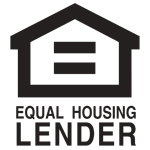Debt Paydown: What’s the Plan?
Good debt versus bad debt
If you’re worried about debt, it may all seem bad, but some debts are often considered good from a financial perspective if they’re helping you build a better future. These types of debts are typically considered good:
Some home- and business-related debt may also come with tax deductions that can reduce the amount of the debt overall. (Ask your tax advisor what you may be able to do to qualify.)While good debt tends to be more about the future, bad debt tends to be more about the past. Debt is usually considered bad if you’re paying for things that no longer generate value, like eating out. (The food is gone, but you’re still paying for it.)
3 debt paydown strategies
Once you’ve separated the good debt from the bad, consider these three main debt payment strategies. The best one for you is the one you’re most likely to stick to.
- Avalanche: Pay off your credit card or loan with the highest interest rate first, then the next highest, and so on, regardless of the balance. Continue to pay the minimum amounts on your other debt.
- Snowball: Pay off your credit card or loan with the smallest balance first, then the next smallest, and so on, regardless of the interest rate. Continue to pay your minimums on other debt.
- Consolidation: Transfer all the debt you can into a new loan with a lower rate. Personal loans and lines of credit as well as home equity loans and HELOCs can be good options.
Be realistic about your budget.
How much can you afford to put toward paying off your debt each month? Whether it’s $1,000 a month or $10 a month, you’re moving in the right direction. Use our budget calculator to see where your money is really going and spot places where you could spend a little less.
Remember why you’re doing this.
There are so many great reasons to pay down your debt. What are yours?
- Reduce worry and stress
- Improve your credit score
- Free up your finances for the next big purchase on your wish list












